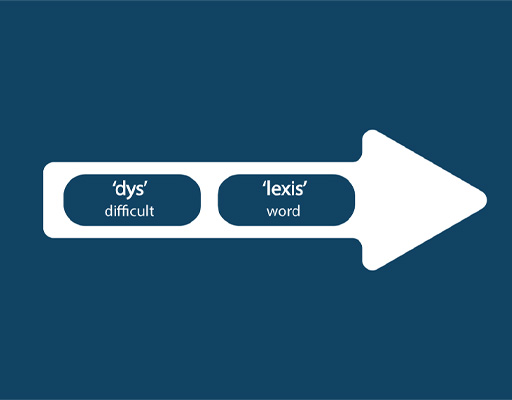1.2 The myth of dyslexia
Dyslexia is a complex condition that affects the brain (known as a ‘neurological condition’), and it can present challenges with reading, writing, spelling, organising, managing time, and remembering things. The term, coined in 1883 by ophthalmologist Rudolf Berlin, originates from two Greek words: ‘dys’ and ‘lexis’.
He chose the word to denote difficulties with words by patients (Wolf et al., 2024); later on, another two physicians, Morgan and Hinshelwood (based on the work of German ophthalmologist Kussmaul, 1878) used the word to describe a kind of ‘word blindness’ where people had trouble reading.
Wolf et al. assert that the first explanations were linked to the visual system. Nowadays, we know that dyslexia is not due to vision problems, but because of how the brain works, that is, neurobiology (discussed later in Week 3).
Over the years, understanding of dyslexia has evolved significantly. In the UK, between 1963 to 1972, the Word Blind Centre for Dyslexic Children initiated discussions on dyslexia, leading to the Warnock Report 1978. The report was instrumental in defining dyslexia as disability integrated now in the Disability Discrimination Act of 1995.
Despite progress, dyslexia was initially dismissed as a myth by some, instead being viewed as an excuse for poor academic performance. However, attitudes shifted over time with the Rose Report 2009 and the Equality Act 2010 recognising dyslexia as a real learning difficulty affecting various cognitive functions (this means how the brain works). Yet, perceptions vary globally, with some still viewing dyslexia as a myth or a curse.
Activity 1 What do you know?
This activity will test what you already know about dyslexia. Below, you’ll find a list of 15 traits. Just drag and drop the ones you think are related to dyslexia into the box in the middle. Give it a go!
Comment
In fact, all of these traits are associated with dyslexia. Of course, not every individual with dyslexia will exhibit each one – the manifestation of dyslexia can vary significantly from person to person. A longer list of associated traits will be explored as you progress through this course.

